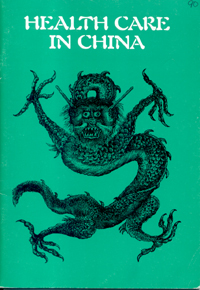Sign up to our newsletter Subscribe
Challenges and Solutions for Budget Impact Analysis of Gene Therapies

In this report our visiting scholar. Yinong Shao, has produced a fascinating picture of the health services in China in 1988. It is particularly remarkable because even a few years ago the wealth of statistics which it contains could not have been published.…
In this report our visiting scholar. Yinong Shao, has produced a fascinating picture of the health services in China in 1988. It is particularly remarkable because even a few years ago the wealth of statistics which it contains could not have been published. First and foremost Shao’s Report is an indication of the new enlightened approach by the Chinese in allowing international discussion of their internal affairs.
The Chinese situation which the Report describes is impressive by any standards. Spending only half the proportion of national wealth on health care of that in Britain – and less than a third of that in some other Western countries – they appear to have achieved a standard of health which bears comparison to that of these richer countries. Life expectancy in China is close to that of European countries, and the dramatic reduction in infant mortality in recent years suggests that on that measure also they will soon be able to match the standards of the Western World.
Much of this appears to have been achieved by a successful concentration on public health and preventive medicine, which may perhaps only be possible within a highly disciplined and closely knit local community. The reduction in the birth rate and the apparently virtual elimination of sexually transmitted diseases suggest that it has been possible to set standards of social behaviour in China which have not been possible particularly in other less developed countries. No doubt this stems from the long cultural traditions of the Chinese people. It must be remembered that China has one of the oldest civilisations in the world, with a very long and distinguished scientific tradition.
The other aspect of Chinese health care which the report emphasises is its variability. Many villages still rely on privately financed health care, rather than a collective approach. There are also huge contrasts between the urban and rural levels of provision. And interestingly, even where health insurance is being introduced to extend health care in the rural areas, high levels of co-payment by the patients are still expected.
Thus China appears to be putting into practice principles which are often still debated in Western countries. They do not have the uniform and centralised systems of provision for health care which might have been expected of them. They have chosen instead a largely decentralised approach, with a very strong emphasis on individual and community participation, especially with reference to population control.
One illustration of community involvement seems to be the low ratio of nurses to doctors. In the West, doctors are substantially outnumbered by nurses. In China the reverse is true. This may be because the families and friends of the patients in China accept more of the responsibility for the care of the sick.
Undoubtedly, this Report has important lessons for its Western readers. It is not simply, for example, the co-existence of traditional 4 Chinese medicine and Western methods of treatment, each having their appropriate role. It is more the fact that a ‘collectivism country such as China seems to have a surprisingly ‘free enterprise’ approach to medical care. Hopefully such lessons will broaden the vision of those whose task it is to plan the future of medical care in Europe and the West.
Health Care in China
Shao, Y.
(1988) Health Care in China. OHE Series on Health. Available from https://www.ohe.org/publications/health-care-china/